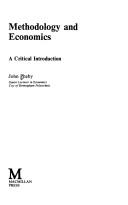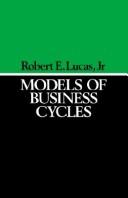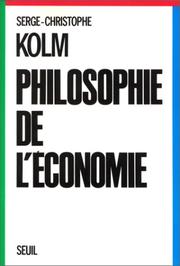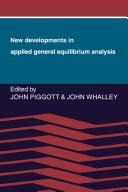| Listing 1 - 10 of 133 | << page >> |
Sort by
|

ISBN: 033338511X Year: 1988 Publisher: Basingstoke Macmillan
Abstract | Keywords | Export | Availability | Bookmark
 Loading...
Loading...Choose an application
- Reference Manager
- EndNote
- RefWorks (Direct export to RefWorks)
Book
ISBN: 9781464121678 1464121672 Year: 2013 Publisher: [New York] Worth/Palgrave Macmillan
Abstract | Keywords | Export | Availability | Bookmark
 Loading...
Loading...Choose an application
- Reference Manager
- EndNote
- RefWorks (Direct export to RefWorks)
Macroeconomics --- -AA / International- internationaal --- 330.00 --- 330.3 --- 339 --- Economics --- Economische en sociale theorieën: algemeenheden. --- Methode in staathuishoudkunde. Statische, dynamische economie. Modellen. Experimental economics. --- Economische en sociale theorieën: algemeenheden --- Methode in staathuishoudkunde. Statische, dynamische economie. Modellen. Experimental economics --- -Macroeconomics -
Book

ISBN: 0043303447 Year: 1984 Publisher: Boston Allen & Unwin
Abstract | Keywords | Export | Availability | Bookmark
 Loading...
Loading...Choose an application
- Reference Manager
- EndNote
- RefWorks (Direct export to RefWorks)
Book
ISBN: 0931477549 Year: 1985 Publisher: Boulder Lynne Rienner
Abstract | Keywords | Export | Availability | Bookmark
 Loading...
Loading...Choose an application
- Reference Manager
- EndNote
- RefWorks (Direct export to RefWorks)
Book
ISBN: 3540133674 3642465048 9783540133674 Year: 1984 Volume: 230 Publisher: Berlin, Heidelberg, New York Springer-Verlag
Abstract | Keywords | Export | Availability | Bookmark
 Loading...
Loading...Choose an application
- Reference Manager
- EndNote
- RefWorks (Direct export to RefWorks)
Macroeconomics --- Economic policy and planning (general) --- Management --- Business & Economics --- Management Theory --- AA / International- internationaal --- 331.31 --- 330.3 --- Economisch beleid. --- Methode in staathuishoudkunde. Statische, dynamische economie. Modellen. Experimental economics. --- Economic policy --- Mathematical models --- Congresses --- Economisch beleid --- Methode in staathuishoudkunde. Statische, dynamische economie. Modellen. Experimental economics

ISBN: 0631147896 0631147918 9780631147893 Year: 1987 Publisher: Oxford Blackwell
Abstract | Keywords | Export | Availability | Bookmark
 Loading...
Loading...Choose an application
- Reference Manager
- EndNote
- RefWorks (Direct export to RefWorks)
Business cycles --- Mathematical models --- 330.33 --- -AA / International- internationaal --- 331.00 --- 330.3 --- Economic cycles --- Economic fluctuations --- Cycles --- Financial crises --- Conjunctuurtheorieen. Krisistheorieen. Kondratiefcyclus --- Economische bewegingen: algemeenheden. --- Methode in staathuishoudkunde. Statische, dynamische economie. Modellen. Experimental economics. --- Mathematical models. --- 330.33 Conjunctuurtheorieen. Krisistheorieen. Kondratiefcyclus --- AA / International- internationaal --- Methode in staathuishoudkunde. Statische, dynamische economie. Modellen. Experimental economics --- Economische bewegingen: algemeenheden --- Business cycles - Mathematical models

ISBN: 2020091763 9782020091763 Year: 1986 Publisher: Paris Seuil
Abstract | Keywords | Export | Availability | Bookmark
 Loading...
Loading...Choose an application
- Reference Manager
- EndNote
- RefWorks (Direct export to RefWorks)
Methodology of economics --- Economics --- economie --- AA / International- internationaal --- 330.1 --- 330.00 --- 330.3 --- Economic theory --- Political economy --- Social sciences --- Economic man --- Domein en natuur van de staathuishoudkunde. --- Economische en sociale theorieën: algemeenheden. --- Methode in staathuishoudkunde. Statische, dynamische economie. Modellen. Experimental economics. --- Economics. --- Economische en sociale theorieën: algemeenheden --- Domein en natuur van de staathuishoudkunde --- Methode in staathuishoudkunde. Statische, dynamische economie. Modellen. Experimental economics
Book
ISBN: 3540189661 3642456413 Year: 1988 Publisher: Berlin Springer
Abstract | Keywords | Export | Availability | Bookmark
 Loading...
Loading...Choose an application
- Reference Manager
- EndNote
- RefWorks (Direct export to RefWorks)
Structural exchange rate modeling has proven extremely difficult during the recent post-1973 float. The disappointment climaxed with the papers of Meese and Rogoff (1983a, 1983b), who showed that a "naive" random walk model distinctly dominated received theoretical models in terms of predictive performance for the major dollar spot rates. One purpose of this monograph is to seek the reasons for this failure by exploring the temporal behavior of seven major dollar exchange rates using nonstructural time-series methods. The Meese-Rogoff finding does not mean that exchange rates evolve as random walks; rather it simply means that the random walk is a better stochastic approximation than any of their other candidate models. In this monograph, we use optimal model specification techniques, including formal unit root tests which allow for trend, and find that all of the exchange rates studied do in fact evolve as random walks or random walks with drift (to a very close approximation). This result is consistent with efficient asset markets, and provides an explanation for the Meese-Rogoff results. Far more subtle forces are at work, however, which lead to interesting econometric problems and have implications for the measurement of exchange rate volatility and moment structure. It is shown that all exchange rates display substantial conditional heteroskedasticity. A particularly reasonable parameterization of this conditional heteroskedasticity, which captures the observed clustering of prediction error variances, is developed in Chapter 2.
International finance --- Business & Economics --- Economic Theory --- AA / International- internationaal --- 330.3 --- 333.450 --- Methode in staathuishoudkunde. Statische, dynamische economie. Modellen. Experimental economics. --- Theorie van het deviezenverkeer. Theorie van de koopkrachtpariteit. --- Methode in staathuishoudkunde. Statische, dynamische economie. Modellen. Experimental economics --- Theorie van het deviezenverkeer. Theorie van de koopkrachtpariteit
Book
ISBN: 9023720644 Year: 1974 Publisher: Rotterdam Universitaire Pers
Abstract | Keywords | Export | Availability | Bookmark
 Loading...
Loading...Choose an application
- Reference Manager
- EndNote
- RefWorks (Direct export to RefWorks)
Quantitative methods (economics) --- Econometrics --- Econometrics. --- AA / International- internationaal --- 303.8 --- 330.115 --- 330.3 --- Econometrische behandeling van een onderwerp. --- Econometrie --- Methode in staathuishoudkunde. Statische, dynamische economie. Modellen. Experimental economics. --- 330.115 Econometrie --- Economics, Mathematical --- Statistics --- Econometrische behandeling van een onderwerp --- Methode in staathuishoudkunde. Statische, dynamische economie. Modellen. Experimental economics

ISBN: 0521309298 Year: 1985 Publisher: Cambridge Cambridge University Press
Abstract | Keywords | Export | Availability | Bookmark
 Loading...
Loading...Choose an application
- Reference Manager
- EndNote
- RefWorks (Direct export to RefWorks)
Microeconomics --- Equilibrium (Economics) --- Congresses --- AA / International- internationaal --- 331.05 --- 330.3 --- 330.01 --- NBB congres --- Econometrische analyse van de economische bewegingen en cycli. --- Methode in staathuishoudkunde. Statische, dynamische economie. Modellen. Experimental economics. --- Theorie van het economisch evenwicht. --- Conferences - Meetings --- Theorie van het economisch evenwicht --- Methode in staathuishoudkunde. Statische, dynamische economie. Modellen. Experimental economics --- Econometrische analyse van de economische bewegingen en cycli
| Listing 1 - 10 of 133 | << page >> |
Sort by
|

 Search
Search Feedback
Feedback About
About Help
Help News
News